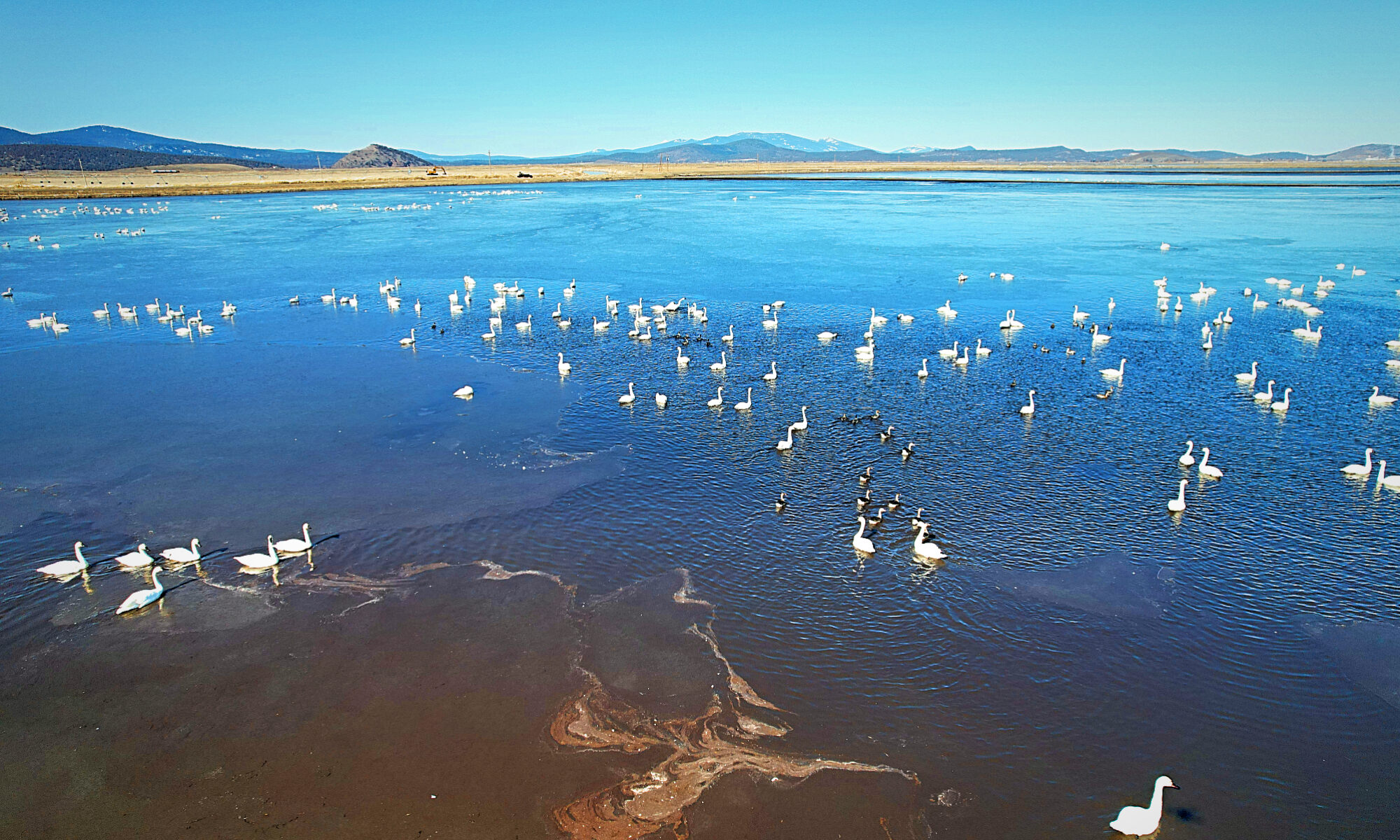The Wildlife of the Klamath Drainage District
From the birds to the Pacific Flyway to the raptors and other animals that make KDD their home, landowners take as much pride in the wildlife in their fields as they do the fields themselves.
One of the under-appreciated aspects of the Klamath Drainage District is the sheer abundance of wildlife within our triangle of the Klamath Project. Sure, everybody knows the Klamath Basin as a stopping point of the Pacific Flyway. But few stop to consider more than ducks, geese and swans feed and bed in the lands of KDD.
KDD’s unique ecosystem lends itself to having a variety of fauna, and when our fields and ditches have access to water, aside from waterfowl, you can find small creatures such as snails, frogs, turtles and the occasional fish that’s managed to find its way into our systems. The smaller amphibians and mollusks provide food for everything from sandhill cranes and ducks as well as the numerous muskrats and occasional otter found swimming in the canals.
When Klamath Drainage District lands are irrigated, larger herbivores, most notably deer, find plenty of food in the fields. Our patrons have seen them not only in hay fields, but also grain fields, potato fields and any other field that provides leafy greens for them to nosh on. It’s not uncommon to see a doe and fawns grazing in the same pasture as cows and lambs.
Our pastures also provide food sources for raptors and owls in the surrounding hills and mountains. The huge population of bald eagles nesting in Bear Valley frequently hunt KDD for ground squirrels, rabbits, mice or anything they can find. A variety of owls nest in the hay sheds on the farms and ranches, helping keep the rodent population in check. Coyotes and badgers also hunt rodents and help clean up the carrion that magpies and turkey vultures aren’t quick enough to get to.
While birds tend to be the most notable predators in KDD, patrons have also seen cougars and bobcats prowling the area, though not nearly as frequently. The most surprising large mammal seen in the area hasn’t been an elk or pronghorn, but a black bear! Granted bear sightings are incredibly infrequent, but the fact that has been rare bear sightings speaks more to the abundance of feeding opportunities that agriculture in the Klamath Drainage District creates.
Even though some of the wildlife in KDD can be troublesome, patrons recognize their importance to creating the variety of species that inhabit our lands. And when ag in the district is receiving water and our patrons are successful, it not only benefits the family farmers and ranchers – it also benefits our wildlife neighbors.













